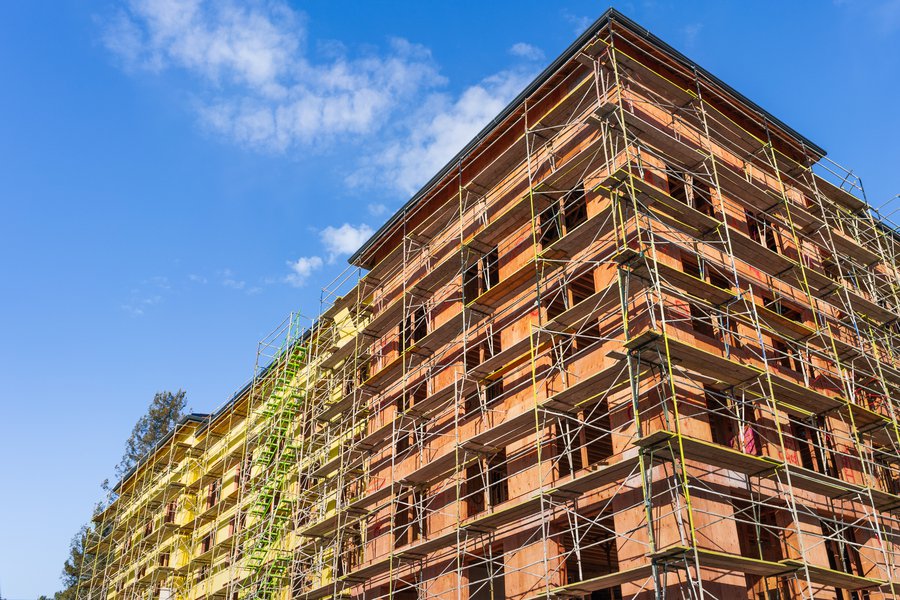
The "missing middle" has never seemed so relevant as a class descriptor -- and in fact, it's yet another socioeconomic trend that proves everything from the Roaring '20s is new again. You can apply it to housing or to individuals from the rapidly diminishing middle-class bracket. Either way, it hardly needs description as a term, because almost everyone feels like they've experienced it -- or maybe that they live it on a day-to-day basis.
History meets present-day need
"Missing middle housing was first introduced in the 1920s. It provided walkable cities with multi-unit housing that generated the population density to support transit and local commerce," explains multifamily housing developer Brad Padden, who specializes in median-income small- footprint units for missing middle income earners.
While many developers lately find a way into redeveloping neighborhoods by allotting a certain (usually small) number of affordable units into multifamily buildings, Padden is betting big on the missing middle, typically developing entire buildings of market-rate middle-income housing with several units allocated to low income. He's had success in Seattle, where most of his buildings are managed by Common, and now is taking on several projects in Los Angeles -- a city where mid-priced housing is desperately needed and the gap between rich and poor is dramatic.
Missing middle housing in cities
"There is an incredible need for mid-rise small-format housing in urban communities," says Padden. His company, Housing Diversity Corporation, keeps prices affordable by combining mindful design with smaller square footage. It's not for everyone, but LA is a city where many people have to live in either studios or one room of a share rental, so in many ways, this is a return to previous decades and a departure from the luxury-condo development craze that's been so detrimental to middle-class earners all over the city.
Atlanta is another urban capital that's overhauling its zoning to allow for higher-density building specifically to accommodate the middle class. This city may be known for its urban culture, but "gentle density" housing, in the form of duplexes and single-family homes, is the norm in many neighborhoods. Add to that the gradual economic decline of the urban center, and there's been very little in the way of desirable workforce housing in core urban areas -- while gentrification has also pushed people out of their longtime neighborhoods. High-rises, mid-rises, adaptive- reuse projects, and courtyard apartment complexes are all on the table as builders and citizens consider missing middle solutions.
Missing middle housing without high-density zoning
Another housing solution commonly suggested for the missing middle is the homeowner-powered one that works by allowing -- even encouraging -- people in single-family homes to build accessory dwelling units (ADUs) that can house another family or two on the property. This is now allowed throughout California, and people who object to high-rise and mid-rise developments may in time be forced to concede that casitas and in-laws on every owner-occupied lot could provide a more gentle, suburb-suitable solution to the state's housing crisis.
That said, in many states, suburbs are not the area where middle-class families have trouble finding housing. Quite the opposite, they move to the suburbs because city dwelling is no longer feasible. But as more people gravitate to a car-free lifestyle -- or, post-COVID-19, more people simply look to cut costs -- a big, sprawling suburban life where you have to drive everywhere may not make sense.
Missing middle housing is not mass-transit dependent
The question is, how do you balance this with people's post-COVID-19 fear of taking mass transit? According to thinkers like Padden, walkable cities have always been the answer.
"Core urban neighborhoods are very walkable and bikeable, so I expect an increase in popularity for those alternative transportation methods," he says.
As a company experienced in developing middle-income housing in urban core neighborhoods, the first thing that Housing Diversity Corporation does is evaluate a site's walkability. So, even though fewer people may be considering a lifestyle where they take the metro to work, developers who target the missing middle hope that people will always want a situation where they can work, play, and live in the same neighborhood without taking transportation every day.
The way forward
Prior to the pandemic, there was already a shift away from luxury condo development, plus a sense that the public housing infrastructure as it exists needs an overhaul to be more efficient and solutions-oriented. Now, there seems to be even greater momentum to serve the middle-class, essential-worker demographic -- because to house them serves the engine of all urban economies.
"middle" - Google News
June 03, 2020 at 01:00AM
https://ift.tt/2AwUbpV
What Is the Missing Middle? - Motley Fool
"middle" - Google News
https://ift.tt/2MY042F
Shoes Man Tutorial
Pos News Update
Meme Update
Korean Entertainment News
Japan News Update
No comments:
Post a Comment